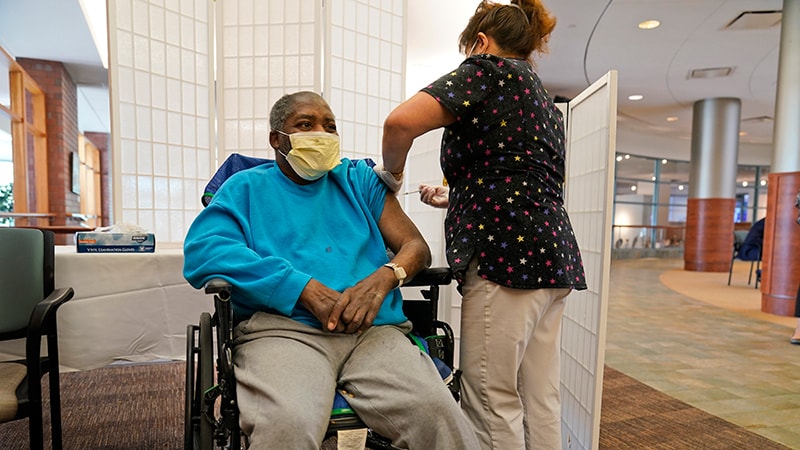—
Cognitive evaluation is objective but not very accurate for diagnosis in sports, study finds
by
Sophie Putka,
Enterprise & Investigative Writer, MedPage Today
June 13, 2024
Reported symptoms were more accurate for concussion diagnosis than objective cognitive testing was, a case-control study of National Collegiate Athletic Association (NCAA) athletes found.
Diagnostic utility — a combined measure of sensitivity and specificity — of symptoms was deemed “excellent” both for score on the Sports Concussion Assessment Tool-5 (SCAT5) and symptom severity score, with area under the curve of 0.93 and 0.94, respectively.
In contrast, the cognitive evaluation portion of the tool, called the Standardized Assessment of Concussion (SAC), had poor-to-fair diagnostic utility (AUC 0.70), Kimberly Harmon, MD, of the University of Washington in Seattle, and co-authors reported in JAMA Network Open.
A 2-point increase in total symptom score had a sensitivity of 86% and specificity of 80%, whereas the same magnitude decrease in the 50-point SAC, had a sensitivity of 49% and specificity of 81%.
“An athlete with a clear mechanism of injury who develops symptoms should be considered concussed unless there is a reasonable alternative explanation for these symptoms,” Harmon’s group concluded.
Acute and sideline diagnosis of concussion can be difficult, as there are still no objective biomarkers or tests. And while symptoms like disorientation and dizziness are good indicators of concussion, “this relies on accurate reporting by the athlete who may not report symptoms because of a desire to return to play, a fear of letting teammates down, minimizing the seriousness of concussion, difficulty discerning symptoms, a delay in symptom development, or other reasons,” the researchers wrote.
“If people don’t tell you that they have symptoms, then you are sort of reliant on this cognitive test,” Harmon told MedPage Today. “How do you interpret that cognitive test?”
Although her group noted that declines on the SAC from baseline were highly specific, 45% of athletes with concussion had an SAC score at or above their baseline indicating a normal result.
“So there are some things in here that you can look at and say, ‘if you do that bad on this portion of the exam, it’s almost certainly concussion.'” Harmon told MedPage Today. “But also remember that people can be concussed and still test normally on this … You can’t say, ‘Oh, you’re fine. Don’t worry about the fact that you have a headache and you’re foggy.'”
Prior attempts to create an objective component for concussion evaluations have had mixed results. SCAT5 uses a 5-word memory list, replacing a prior 10-word version; SCAT6, which came out after the study period, has further adjustments.
“The gold standard currently for the diagnosis of concussion is basically sort of a clinical impression,” Harmon said. “Did they have motor incoordination when they stood up? Were they unconscious? How are they processing? How’s their balance?”
“Athletes need to be forthcoming with their symptoms, because that’s our best clue,” she added.
Advanced imaging and fluid-based biomarkers show promise to help diagnose concussions, commented Christopher Bailey, PhD, of the University Hospitals Sports Concussion Center in Cleveland, Ohio, who was not involved in the study. “However, we are not there yet.”
If clinical biomarkers do pan out for routine use, he said, “it will be interesting to see if symptom endorsement continues to be superior in distinguishing groups of concussed versus non-concussed athletes.”
Division I athletes from four of the some 1,100 U.S. institutions where the NCAA regulates student athletics were eligible for inclusion in the study if they sustained a concussion diagnosed by team medical personnel from July 2020 through December 2022. Diagnoses were based on a “Concussion in Sports Group” definition and included the Post-Concussion Symptom Scale (PCSS) and SAC with a 10-word memory list, which together comprise the SCAT5. Total SAC score included assessment of orientation, immediate memory, concentration, and delayed recall, with higher scores indicating better performance. Higher PCSS symptoms and symptom severity scores indicate worse symptoms.
Athletes had all completed baseline concussion testing, as required by the NCAA. Those who did not have a complete baseline and acute injury evaluation using the SAC’s 10-word memory list were excluded. Athletes who were concussed and agreed to participate were matched to a control athlete based on team, sex, gender, certain concussion comorbidities, and baseline total symptom and SAC scores (within a 2-point range). Control athletes were administered the SCAT5 within 2 weeks of their matching concussion incident.
Researchers found that the accuracy of the SAC numerically decreased as time from injury to the SAC evaluation increased, although the finding was not significant. Self-reported race and ethnicity affirmed representative distribution: 58% white, 19% multiracial, and 8% Black athletes.
The final sample included 184 athletes (92 pairs), of whom 52% were men. The most concussions occurred while playing football (40%) and volleyball (15%), but 59% of athletes in the study played a sport other than football.
Authors acknowledged that their study included only Division I athletes from the NCAA and thus might not reflect other athletes. Nonequivalent SAC 10-word lists to decrease the learning effect in retaking tests might have accounted for SAC improvements observed in the control group. The study excluded athletes with a concussion in the prior year but did not account for other concussion history, which could also have affected SAC performance.
![author['full_name']](https://clf1.medpagetoday.com/media/images/author/Putka_Resize_96.jpg)
Sophie Putka is an enterprise and investigative writer for MedPage Today. Her work has appeared in the Wall Street Journal, Discover, Business Insider, Inverse, Cannabis Wire, and more. She joined MedPage Today in August of 2021. Follow
Disclosures
Funding came from donations from University of Washington alumni Jack and Luellen Cherneski and the Chisholm Foundation.
Harmon disclosed no conflicts of interest. A co-author reported being a part-time employee of the National Hockey League and other relationships with Sporting KC and the Concussion in Sport Group Tools Committee.
Bailey disclosed no conflicts of interest.
Primary Source
JAMA Network Open
Source Reference: Harmon KG, et al “Diagnosis of sports-related concussion using symptom report or standardized assessment of concussion” JAMA Netw Open 2024; DOI: 10.1001/jamanetworkopen.2024.16223.
Note: This article have been indexed to our site. We do not claim legitimacy, ownership or copyright of any of the content above. To see the article at original source Click Here












